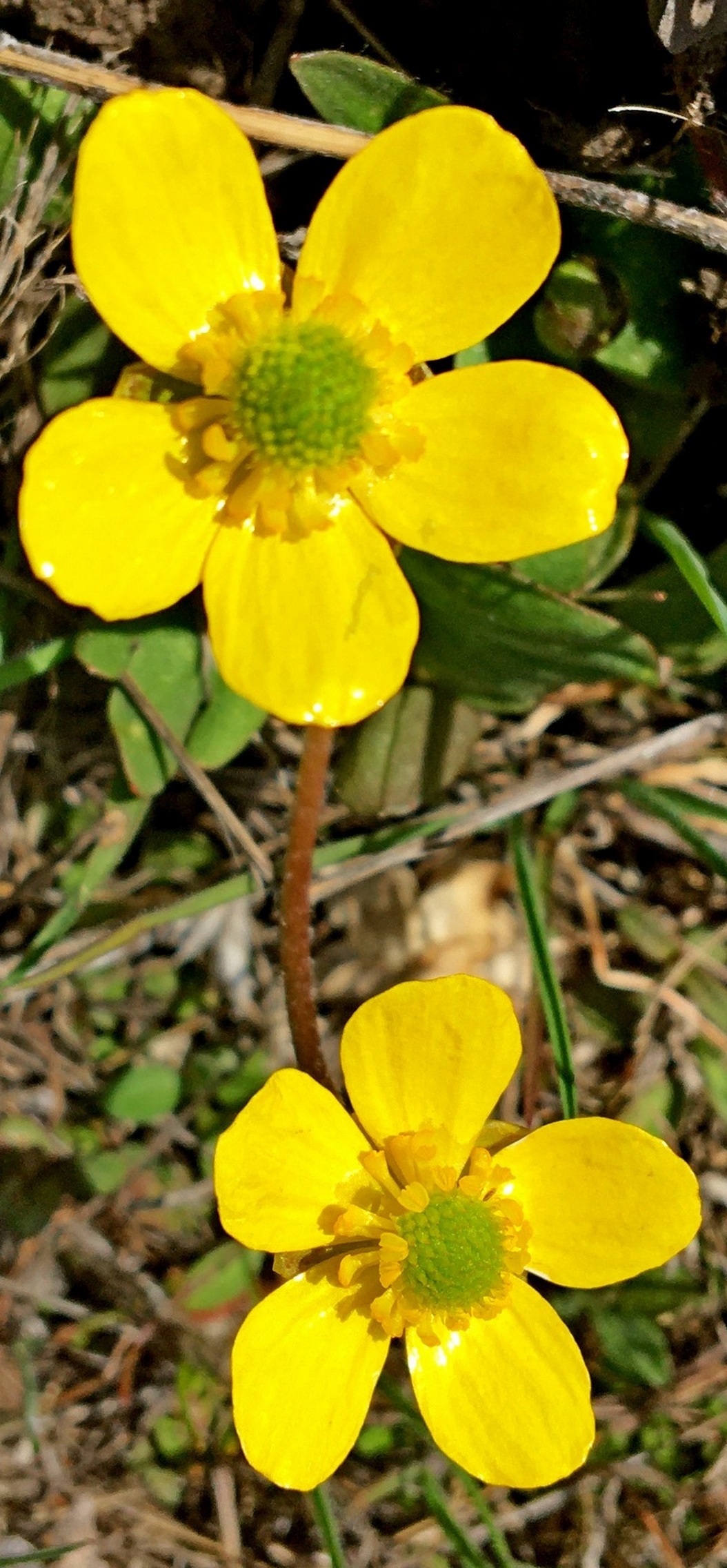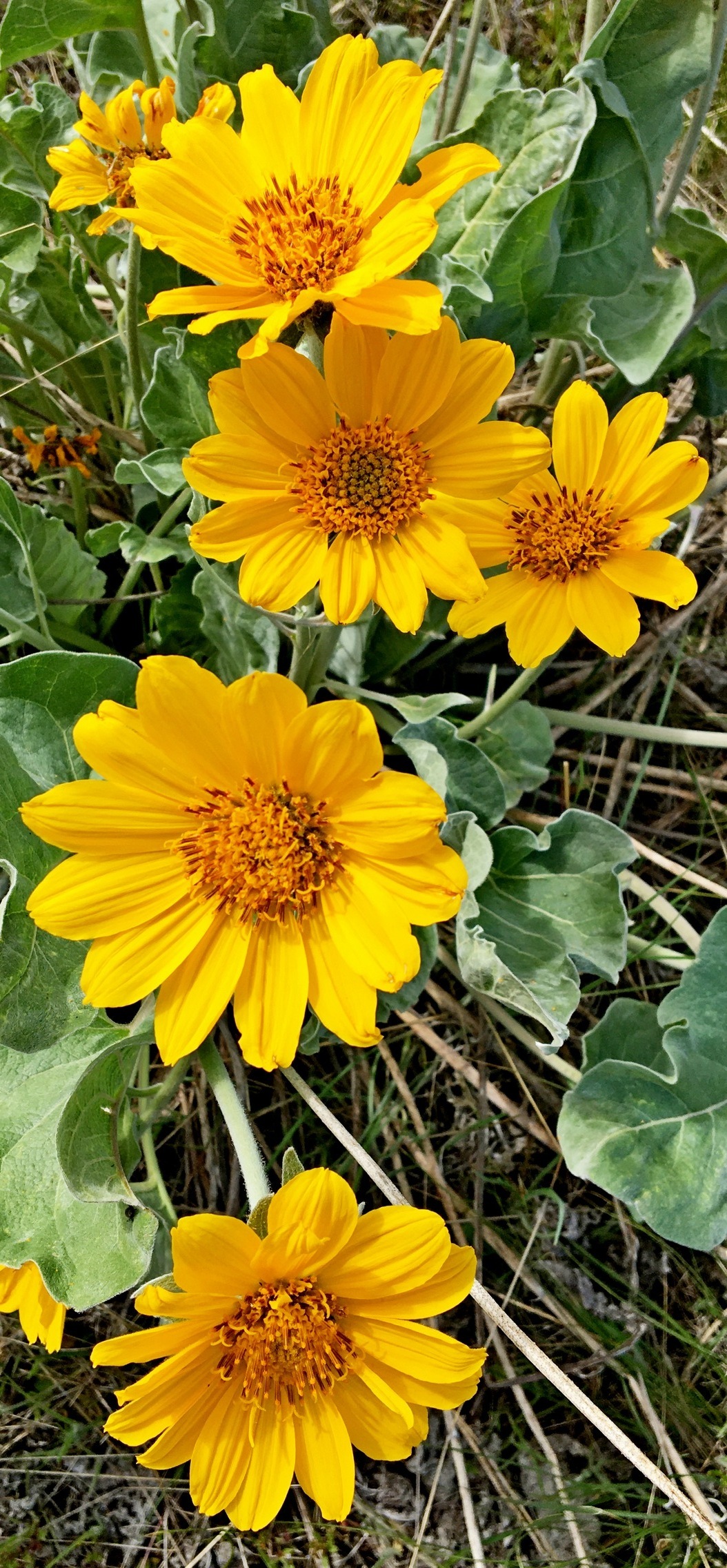For the preservation of this locality,
collection or picking is prohibited.
The title for this Flower Field arises from the fact that way long time ago, before the turn of the twentieth century, when the area was first being settled, two competing towns arose side by side, Columbia to the west and Grand Forks, to its east. The two vied for the honour of having the Canadian Pacific Railway (CPR) Station placed in their town when the railroad arrived in 1899. Columbia won that round and the CPR Station was placed in Columbia, primarily as the result of a dispute between Grand Forks and the CPR. That station, just by-the-by, has become the
oldest CPR station in B.C. still in its original location. However, that proved to be Columbia's final victory, as eventually Columbia was absorbed into the city of Grand Forks, the station thereafter bearing the name
Grand Forks.
Near the southwest corner of what was once Columbia, this is a fairly large urban Flower Field, covering an area of approximately 27 acres, or 11 hectares. The Flower Field is roughly centred on 68th/70th Avenue, running from about 25th Street in the east to Northfork Franklin Road in the west. The major trees to be found here are Lodgepole Pine, with a smattering of small shrubs, also native.
The first major wildflower which appears in the area in question is the
Sagebrush Buttercup, locally a very common early spring flower. Coming into bloom in late March, the
Sagebrush Buttercup will produce a patchy show of small, ground hugging flowers for several weeks, giving way to the
Arrowleaf Balsamroot, a larger, daisy-like flower, in early May.
In the interim, and following the
Arrowleaf Balsamroot, are myriad other, less showy and less prevalent, wildflowers of yellow, orange, red, blue and purple. The penultimate major bloom occurs with the blossoming of the
Silky Lupine, from late May well into July, with a final showing of more yellows, name and species as yet unknown, along the roadside fringes in late summer and early fall.
The map below outlines the perimeter of our flower field, which is bifurcated by 68th/70th Avenue. North of the avenue are two undeveloped plots of land, while, to the south is an area once occupied by a Great Northern Railway wye and tracks, now the majority occupied by the
Grand Forks Disc Golf Course. Parking coordinates given will place one in the Disc Golf Course's parking lot.
Sagebrush Buttercup
Ranunculus glaberrimus - RANUNCULACEAE

Decumbent to erect, hairless, usually in small clumps. Stem single, may be branched at top. Basal leaves narrow to spoon-shaped, 1 1/2–2 in. long, entire to deeply 3-lobed and tapered at the base to a petiole at least as long as the leaf. Flowers yellow, often turning white with age, petals 1/2 in. long. Grows in sagebrush, juniper woods, conifer forests, at mid to high elevations. Var. glaberrimus has basal leaves egg-shaped to nearly round, scalloped with 1–3 bluntly rounded tips. Var. ellipticus has lance-shaped entire leaves; upper stem leaves may be deeply divided into 3 lobes.
🌷 Rarity: Common
🌺 Flowering Time: All Spring
🌹 Life Cycle: Perennial
🌼 Height: 6-12 inches
🌻 Habitat: Shrub-Steppe, East-Side Forest
💐 Found In: Steens, Wallowas, Olympic Np
🌸 Native: Yes
From Pacific Northwest Flowers
Arrowleaf Balsamroot
Balsamorhiza sagittata - ASTERACEAE

|
Clumps of upright leaves, erect stems. Leaves widely triangular, with heart-shaped base, 8–24 in., entire, pale olive-green, velvety on both sides. Soon after bloom time, leaves become hairless, twisted, papery. Flower stem 1–3 ft. tall, leafless, holds single 4 in. flower above usually woolly bracts. Ray flowers 1–2 in. long. Grows in deep rich soils in ponderosa pine and sagebrush habitats, often in huge patches, at mid elevations. The most widespread Balsamorhiza.
🌹 Rarity: Common
🌷 Flowering Time: Mid-Late Spring
🌺 Life Cycle: Perennial
🌼 Height: 8-36 inches
🌻 Habitat: East-Side Forest, Shrub-Steppe
💐 Found In: Steens, Wallowas, East Gorge
🌸 Native: Yes
From Pacific Northwest Flowers |